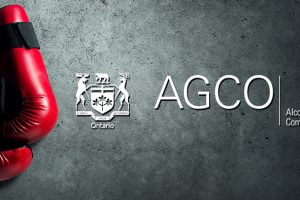The UK Regulator Publishes Customer Behaviour Data
The Gambling Commission has released data on a typical customer journey. The regulator’s research, dubbed ‘Path to Play’ finds that a decision to place a bet on a sporting event or gamble at an online casino is driven by six factors.

The UK Regulator Publishes Customer Behaviour Data © Pixabay.
The UK regulator, the Gambling Commission, has released data which shows the typical customer journey from deciding to gamble to placing a bet or gambling online.
The research, dubbed ‘Path to Play’ involved extensive questioning of gamblers to help the regulator understand the reasoning why people choose to bet or play at the best regulated casino sites in the UK.
The Gambling Commission then used this data to detail the six steps that consumers encounter during the thought process before placing a sports bet, buying a lottery ticket or online gambling.
The Path to Play stages are: passive influences, external triggers, internal impulses, active search, play experience and play outcome.
Passive Influences according to the research, are the underlying attitudes and perceptions that a consumer has when thinking about gambling. Several factors drive these thoughts, such as previous success when undertaking the gambling activity or hearing about success from others.
The Gambling Commission found that more than a quarter (28%) said past wins were a driving factor in deciding if to gamble, while a slightly lower number (27%) said they were encouraged to bet after hearing of a friend or someone they knew that had won.
The passive influences, as stated by the Path to Play Research:
- Win a significant amount of money – 28%
- Hear about someone who had a big win – 27%
- Wanting to take part in gambling activity – 20%
- See/hear gambling adverts – 19%
- Receive marketing from gambling companies – 19%
- Gamble with friends – 18%
- Regret how much spent on gambling – 16%
- Talk about gambling with family or friends – 16%
- See sponsorship/logo of gambling companies – 15%
- Read about gambling on social media – 15%
- Lose a significant amount of money gambling – 14%
- See betting bookmaker/casino or another retail venue – 14%
- Hearing about someone else with gambling issues – 14%
- Watch a video about gambling or a betting-related blog – 11%
The Gambling Commission research found that despite 19% of the respondents stating that they were passively influenced by advertising, most felt that gambling commercials were mainly “background noise”.
External influences are what the regulator considers to be “nudges that prompt consideration of play”, and their research found that special offers such as free bets and spins were the most prevalent triggers for someone to gamble.
Internal impulses refer to the deep-seated desire to gamble and the rationale for doing so. The biggest motivator was to win some money, even if it was only a small amount (43%), just ahead of ‘to have fun’ (38%). Other drivers include; a spontaneous decision (21%) to give myself a treat (21%) to pass the time (20%) was feeling lucky (19%).
19% of those who responded said they placed money on a sporting event to make the game or event more exciting.
Active search is the process in which the customer decides where to bet or play and what to participate in. Strong drivers are familiarity with a game or platform. For example, incidental feedback from one respondent said they liked playing an online casino scratchcard game because it reminded them of Candy Crush.
Having a successful bet or winning at an online casino game had the most positive impact on the play experience, with play outcome being more about reflection and next steps rather than influencing future behaviour.
On why this research was necessary, the Gambling Commission wrote: “The intention is to explore this journey specifically from the gambler’s perspective, which may be different to an operator or regulator’s perspective.
“This will allow us to better understand how consumers experience gambling, what factors influence them, where there may be greater risks for some gamblers, and identify opportunities for intervention.
“The aim was to create a framework of the ‘Path to Play’ indicating the key milestones and stages gamblers go through when they gamble.”
“It is a framework that encompasses the moments typically experienced by consumers, but that also shows how gambling experiences can differ for different people, or in different contexts,” the regulator concluded.



